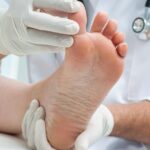COVID-19 continues to affect people worldwide. With the ongoing transmission of COVID, understanding how to protect yourself and others remains pivotal. While scientists and healthcare professionals continue to study the virus and develop treatment methods, there are several steps you can take to reduce risks.
What Is COVID and Its Symptoms?
COVID-19, caused by the SARS-CoV-2 virus, is a respiratory illness that can range from mild to severe. It spreads via respiratory droplets when someone infected talks, coughs, sneezes, or breathes close to others. It can also spread by touching contaminated surfaces, though this method is less common. Symptoms of COVID can vary by person and may appear 2 to 14 days after exposure. Common symptoms include:
- Fever or chills
- Persistent cough
- Shortness of breath
- Fatigue
- Muscle or body aches
- Loss of taste or smell
- Sore throat
- Congestion or a runny nose
- Nausea, vomiting, or diarrhea
Certain individuals, especially older adults or those with underlying health issues, may be at a higher risk of experiencing severe symptoms. Severe cases can result in complications such as hospitalization or long-term health effects, emphasizing the need for public health awareness around managing symptoms responsibly.
How Can It Be Prevented?
Reducing the spread of COVID-19 involves employing practices advised by global health organizations and experts. Focus is placed on limiting exposure and maintaining habits that reduce risk. Below are recommendations to follow to reduce COVID-19 transmission:
- Wear Face Masks: Face masks continue to be an effective barrier against respiratory droplets. Masks should fit snugly over the nose, mouth, and chin without gaps.
- Wash Hands Frequently: Wash hands with soap and water, especially following public interactions, using the restroom, or preparing meals. Use hand sanitizer containing at least 60% alcohol if soap and water are unavailable.
- Clean and Sanitize Surfaces: Disinfect frequently touched surfaces such as doorknobs, countertops, and electronic devices regularly. Products containing bleach or alcohol are effective.
- Stay Home if Unwell: Symptoms of respiratory or flu-like illnesses should prompt individuals to stay home and limit contact with others. This approach not only aids recovery but also helps protect others.
- Vaccination: Vaccination against COVID-19 is widely recommended by healthcare professionals to reduce the severity of illness and protect communities.
How Is It Treated
There are currently various approaches to the treatment of COVID-19, depending on illness severity. Mild cases often require at-home care measures focused on symptom relief. Rest is encouraged, as well as hydration and over-the-counter medications for fever or pain management.
For moderate to severe cases, treatments are typically administered under medical supervision. Options may include antiviral medications. Hospitalization could be necessary for those requiring oxygen or specialized care.
Treatment recommendations continue to evolve as more is learned about the virus. Those experiencing symptoms should remain in contact with healthcare providers to monitor health progression and receive updated advice.
Confer With a Medical Professional
While COVID-19 prevention and treatment methods have adapted over time, public health recommendations remain an integral part of reducing risks. Knowledge of preventive habits, as well as understanding symptoms and available treatments, provides a well-rounded approach to navigating these challenging times.
Consulting with medical professionals about symptoms, vaccination, or next steps is key for individual health concerns. To stay safe and healthy, focus on current guidelines and seek updated information from trusted sources.
Related Articles
Signs It’s Time to See a Podiatrist for Heel Pain
How Dental Crowns Support Teeth After Root Canal Treatments
How an Emergency Dentist Can Treat Sudden Tooth Pain
What to Expect During Your First Visit to a Restorative Dentist





